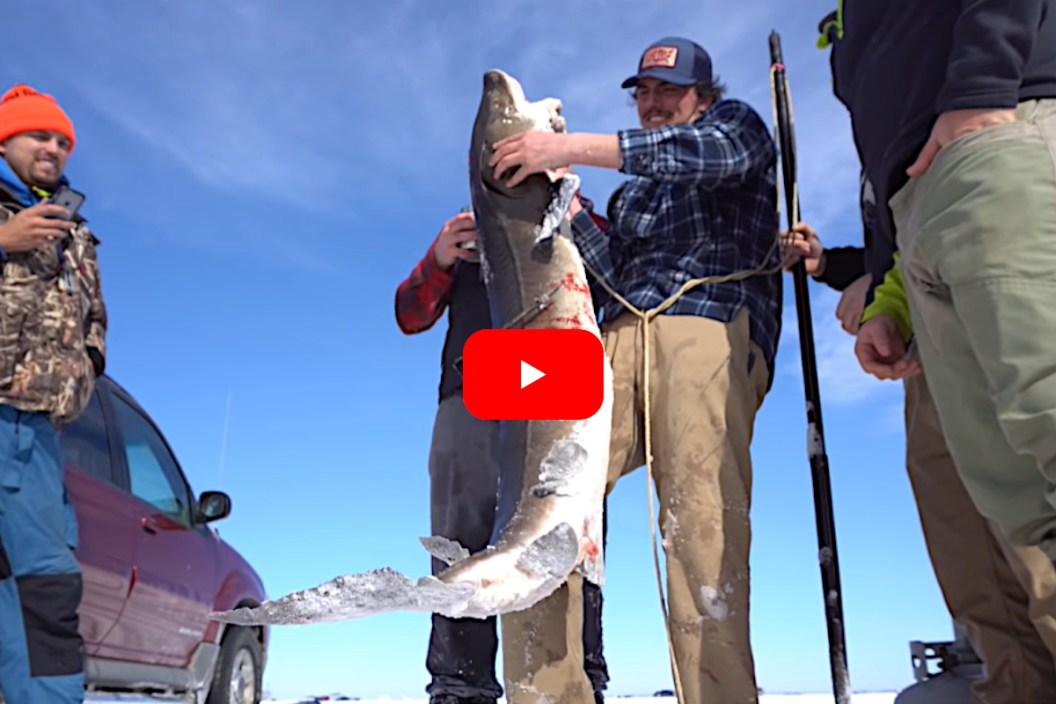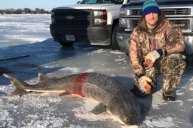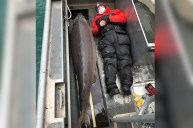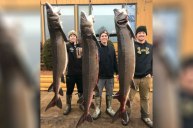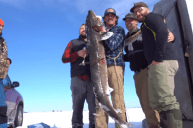Sturgeon spearing is a test of patience.
In freshwater fishing, there are few species that have been around longer than the sturgeon. These giant, prehistoric fish watched the dinosaurs come and go from this world. Unfortunately, lake sturgeon populations are dropping in many areas. This means that seasons for the fish are often short and sweet. In some states, they end as soon as a harvest cap is reached.
That means that for some states, the season may only last a few hours. Success rates are low for the thousands of anglers who apply, but that isn't going to stop them from trying. Because sturgeon spearing is seeped in tradition, especially for famed spear fishery Lake Winnebago in Wisconsin.
In this video, Jake Huebschman of the YouTube channel The Hunting Public heads out to the famed Lake Winnebago system to try his luck. He takes us through everything from the chainsawing of the hole to the setting up of the shanty. It ends up paying off as he spears a 69-pound sturgeon on camera.
Sturgeon spearing licenses are unlimited for Lake Winnebago sturgeon, but as the video noted, your odds of successfully harvesting one are somewhat low. Spearers are also at the mercy of ice conditions, water clarity and the competition around them. It seems Jake's family knows what they are doing. They managed to put him on that fish despite less than desirable ice fishing conditions. Kudos to him for even spotting that fish in the murky water and putting the spear right on the money. Only about an hour before sturgeon season ended too. Who would have thought a deer antler would make a handy sturgeon decoy?
As you saw here, fisheries biologists with the Wisconsin Department of Natural Resources are always on hand to check all the fish that anglers bring in. It appears the DNR were checking the fish for tags near the end, of which this fish had none. In Wisconsin, this season is always held on the second Saturday of February. You must make plans early, the DNR usually stops selling tags in October of the year prior.
Still, they record every bit of data they can about the fish since it helps them manage the population to best keep it sustainable for the future. We're glad to see them doing this work to preserve this unique and ancient species.
For more outdoor content from Travis Smola, be sure to follow him on Twitter and check out his Geocaching and Outdoors with Travis YouTube channels.
NEXT: THE AXIS DEER AND HOW THEY'RE IMPACTING PARTS OF THE UNITED STATES
WATCH
